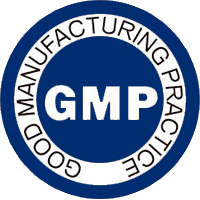The Good Automated Manufacturing Practice (GAMP) Forum was founded in 1991 by pharmaceutical industry professionals in the United Kingdom to address the industry’s need to improve comprehension and evolving expectations of regulatory agencies in Europe. The organization also sought to promote understanding of how computer systems validation should be conducted in the pharmaceutical industry.
GAMP rapidly became influential throughout countries as the quality of its work was recognized internationally. Over time, GAMP has become the acknowledged expert body for addressing issues of computer system validation.
GAMP’s guidance approach defines a set of industry best practices to enable compliance to all current regulatory expectations. More than simply a strict compliance standard, GAMP is a guideline for life sciences companies to use for their own quality procedures. As a result, it can be tailored to a number of computer system types.
Computer system validation following GAMP guidelines requires users and suppliers to work together so that responsibilities regarding the validation process are understood. For users, GAMP provides a documented assurance that a system is appropriate for the intended use before it goes live. Suppliers can use GAMP to test for avoidable defects in the supplied system to ensure quality product leaves the facility.
The GAMP framework addresses how systems are validated and documented. Companies do not need to follow the same set of procedures and processes of a GAMP framework to achieve validation and qualification levels that satisfy inspectors. Instead, GAMP examines the systems development lifecycle of an automated system to identify issues of validation, compliance and documentation.
As a voluntary program, GAMP offers both challenges and benefits. The top three challenges in implementing GAMP are establishing procedural control, handling management and change control, and finding an acceptable standard among the existing variations.
Establishing procedural control is a challenge in using GAMP guidelines because new frameworks may be necessary to gauge the validity of systems. Most pharmaceutical companies have already established a baseline that adheres to standards and regulations that exist today, but they may not have a procedure to check the processes that are in place. This could cause resistance among software developers who may prefer not to work within the confines of specifications and procedures developed by others. Specifications and procedures developed by previous software developers may hinder ways to adjust computer systems, but varying interpretations of GAMP guidelines allow for multiple solutions.
Another hurdle is change control. In the development or modification of computer systems, companies with even the highest of standards can suffer setbacks along the systems development lifecycle. Sometimes minor tweaks by the software programmer may cause breakdowns after validation changes have been implemented. Internal processes and procedures must be established to guard against these occurrences.
Effective documentation management is fundamental for compliance. Any inaccuracies or missing information renders all other efforts moot. Moreover, implementing a formal document management application may be cost-prohibitive for some organizations. Some companies simply use what’s in the GAMP checklists to evaluate their systems. Today’s environment demands a thorough process to show validation.
The benefits of utilizing the GAMP approach for both users and suppliers include:
- Improved understanding of the subject with the introduction of common terminology
- Reduced cost and time to achieve compliant systems
- Reduced time and resources for revalidation or regression testing and remediation
- Reduced cost of qualification
- Enhanced compliance with regulatory expectations
- Established responsibility for all involved parties
When the FDA introduced its current Good Manufacturing Practices (cGMP) for the 21st century initiative, companies shifted their approach to validation. Formerly, they only had to heed a set of rules that accounted for every piece of equipment that was used. Now they can take a risk-based approach to validation by addressing safety, efficacy and quality in the product considerations. This enables the industry to place its investments where it makes the most sense. The onus ultimately falls on manufacturers to accept greater responsibility to validate their systems having the attendant benefits of cost and time to market savings.
GAMP helps provide a quality product from the manufacturer, and helps to limit the pharmaceutical industry’s culpability by ensuring proper steps were placed to deliver a quality product through validated systems. By incorporating input from the full spectrum of stakeholders, fine-tuning and further development of the process is geared towards benefiting the life sciences industry and the general consumer market.
The tools exist for companies to take the steps needed to reap the benefits of validation. Understanding an early adoption of GAMP can increase a company’s competitive position, especially with the implementation of new technologies. By staying aware of technological innovations, companies are able to increase efficiency, minimize risks and reduce costs.


